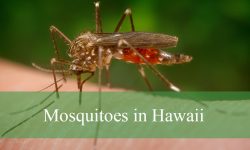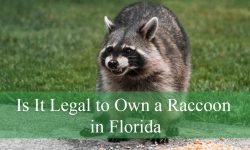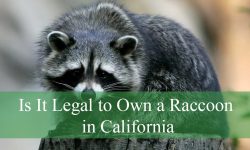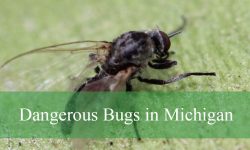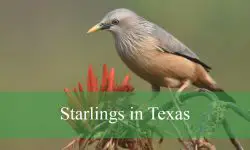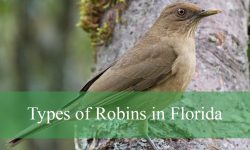Every year, moose in Alaska undertake astonishingly long migrations across challenging landscapes. These journeys are not random but are deeply rooted in survival, reproduction, and environmental cues. While many assume moose are sedentary animals, Alaska’s wild terrain tells a different story. The moose here traverse dozens, sometimes hundreds, of miles between their summer and winter ranges.
The Alaskan ecosystem is shaped by dramatic seasonal shifts, from deep snow and frigid winters to lush, food-rich summers. These environmental changes directly influence the migratory behavior of moose. Scientists and wildlife biologists have been observing these majestic animals for decades to uncover the motivations and patterns behind their long-distance movement.
Migration in Alaskan moose is a complex behavior that intertwines with the availability of resources, predator avoidance, and breeding strategies. To fully understand why these animals migrate, it’s essential to dive into the environmental and biological factors that shape their seasonal decisions.
Seasonal Triggers and Environmental Pressures
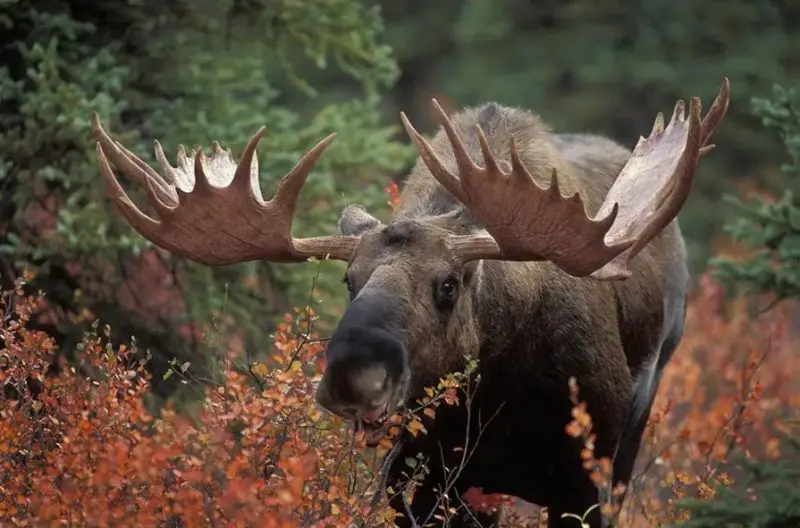
One of the primary drivers of moose migration is the shifting availability of food. During the Alaskan summer, the landscape is covered with abundant vegetation. Wetlands, river valleys, and tundra bloom with willows, birches, and aquatic plants that are essential to moose diets. However, as autumn transitions into winter, this lush buffet disappears under thick blankets of snow.
When winter arrives, deep snow covers the ground and restricts access to ground-level vegetation. In response, moose move to lower elevations and areas with less snowfall. These wintering grounds often include forested habitats where food is more accessible, and the snow is shallower. The timing of this migration is closely linked to the first heavy snowfalls, prompting moose to leave higher elevations.
Temperature fluctuations and daylight changes also act as natural signals. As daylight wanes and temperatures drop in late autumn, moose instinctively begin their migration. These cues are encoded in their biology and are reinforced by generational memory, as calves learn migratory routes by following their mothers year after year.
Nutritional Needs and Habitat Selection
Moose have specific dietary needs that must be met year-round, and this is a critical factor influencing migration. In the summer, they require high-protein, mineral-rich vegetation to support growth and reproduction. Alaskan summer habitats provide an abundance of aquatic plants and deciduous shrubs that fulfill these nutritional demands.
As seasons shift, the nutritional quality and quantity of available food change dramatically. In winter, moose are forced to browse on woody vegetation like twigs and bark, which are less nutritious but still necessary for survival. Migrating to areas where these food sources are more plentiful is essential. Staying in one location would result in over-browsing and starvation.
The search for ideal habitat is not just about quantity but also accessibility. Snow depth plays a significant role in determining where moose settle during the colder months. Deep snow impedes movement and requires more energy for travel. Moose instinctively move to regions where snow is shallow enough to allow efficient browsing and minimize energy expenditure.
Predator Avoidance and Calf Survival
Another reason for moose migration in Alaska relates to predator dynamics, particularly the risk posed by wolves and bears. Moose calves are especially vulnerable in the months following their birth. The timing and destination of migration can help increase calf survival by reducing encounters with predators.
During the calving season, female moose often seek out isolated, high-altitude summer grounds with low predator densities. These remote areas offer fewer hiding places for predators and give moose a better chance to detect threats. By migrating to these areas, cows provide their calves with a safer start to life during a critical development window.
In winter, the dynamics shift. Although predators are still present, moose tend to form looser aggregations in denser forested areas. This not only helps them conserve energy but also provides better visibility and escape opportunities. The migratory behavior helps balance the risks of predation across the seasons.
Breeding Cycles and Mating Behavior
Migration also plays a role in the moose’s reproductive strategy. The mating season, known as the rut, occurs in the fall just before winter migration begins. Bulls travel significant distances to find females, and their movements may partially overlap with migration routes.
After mating, pregnant cows begin their journey toward suitable calving habitats. These locations are often far from their wintering grounds and are chosen specifically for their isolation and abundance of summer forage. By the time calves are born in late spring or early summer, the moose have reached areas rich in nutrients that help mothers produce milk and recover from pregnancy.
The separation between breeding and calving grounds reflects an evolved behavior that maximizes reproductive success. It allows moose to take advantage of seasonal food availability while also improving calf survival rates through strategic habitat selection.
Migration Routes and Terrain Challenges
Moose migrations in Alaska are not easy journeys. The terrain is vast, rugged, and often difficult to navigate. From river valleys and mountain passes to swampy lowlands, moose must cross a wide range of environments to reach their seasonal destinations.
Tracking data from radio-collared moose has shown consistent migratory corridors that are passed down through generations. These routes often follow natural pathways such as riverbanks, ridgelines, and game trails. Some individuals may travel more than 150 miles between seasonal ranges, a remarkable feat considering the obstacles they face.
Moose are well adapted to these movements. Their long legs and strong muscles allow them to wade through rivers and snow with surprising ease. Despite the physical demands, they seem driven by instinct and the promise of better survival prospects at the end of their journey.
Climate Change and Future Migration Challenges
Climate change is beginning to alter the Alaskan landscape in ways that could significantly affect moose migration patterns. Warmer winters, changes in snowpack, and shifts in vegetation zones are already being documented. These environmental shifts may disrupt the delicate balance that moose rely on for successful migration.
Longer growing seasons might initially seem beneficial, but they can also lead to mismatches in timing. If spring arrives earlier than usual, it may affect the availability of food at critical points in the moose’s reproductive cycle. Additionally, fluctuating snow conditions could make traditional wintering grounds less suitable.
As human development expands into rural Alaska, moose are also encountering more roads, settlements, and industrial activities during their migrations. These disruptions can fragment migratory corridors and lead to more dangerous interactions with humans. Conservation efforts will be essential to maintain safe passage and preserve traditional migration behavior.
Cultural and Ecological Importance
Moose are not only vital to the ecosystem but also hold deep cultural significance for Indigenous communities in Alaska. For many Native Alaskans, moose are an important subsistence resource, providing food, materials, and spiritual value. Understanding and respecting moose migration is central to sustainable harvest practices and cultural traditions.
Ecologically, moose help shape plant communities through their browsing habits. Their movements influence the regeneration of willows and birches, and they serve as prey for top predators like wolves. By migrating, moose contribute to nutrient distribution across vast landscapes, playing a subtle but important role in ecosystem health.
Efforts to study and protect moose migration are often collaborative, involving scientists, wildlife managers, and Indigenous groups. By combining traditional knowledge with modern tracking technology, researchers can gain a more complete picture of how and why moose move across Alaska’s wilderness.
Individual Variations in Migration Behavior
Although migration is a widespread behavior among Alaskan moose, not all individuals follow the same path. Some moose are known as partial migrants, meaning they travel shorter distances or remain within a single area throughout the year. These variations often depend on local conditions, genetics, and learned behaviors.
Some populations may adapt to localized resources, reducing their need for long-distance travel. Others may modify their routes from year to year in response to changing environmental cues. These behavioral differences highlight the flexibility and adaptability of moose in responding to the challenges of their environment.
Understanding these individual variations is critical for wildlife management. It allows for targeted conservation efforts that protect both the animals and the habitats they depend on. It also reveals how moose may continue to evolve in response to climate shifts and human encroachment.
Tracking Moose Migration With Modern Tools
Wildlife researchers have made significant progress in understanding moose migration thanks to advances in tracking technology. GPS collars provide precise data on the movement patterns of individual moose across seasons and years. This information helps scientists identify key migration corridors and seasonal habitats.
These insights are valuable for managing hunting regulations, protecting habitats, and predicting future changes. By mapping migration routes, researchers can also identify potential barriers such as highways or pipelines that might interfere with natural movement.
Ongoing studies continue to reveal new aspects of moose behavior, including how they respond to disturbances, how long they remain in stopover areas, and how migration affects their health. These findings are shaping policy and conservation strategies at both state and federal levels.
Conclusion: Nature’s Long-Distance Travelers
The long-distance migration of moose in Alaska is a testament to the species’ resilience, intelligence, and deep connection to the land. These epic seasonal journeys are more than just movements—they are survival strategies refined over thousands of years of evolution. From feeding and breeding to predator avoidance and climate adaptation, every step of their migration is driven by necessity and instinct.
As climate change and human development alter the Alaskan wilderness, the future of moose migration may hang in the balance. Protecting these routes and understanding their significance is crucial not just for moose, but for the ecosystems and cultures that depend on them.
FAQs About Moose Migration in Alaska
What time of year do moose in Alaska typically migrate?
Moose in Alaska generally begin migrating in late fall, often around October or November, as snow starts to accumulate. They return to their summer ranges in late spring, usually by May.
How far can moose migrate in Alaska?
Some moose in Alaska have been recorded migrating over 100 to 150 miles between their winter and summer habitats, depending on terrain and environmental conditions.
Do all moose migrate in Alaska?
Not all moose migrate. Some individuals remain in the same area year-round if local conditions provide adequate food and shelter, though most in colder regions still undertake seasonal migrations.

